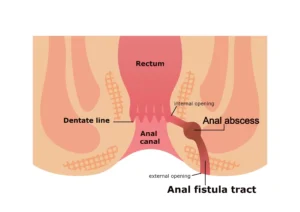Hemorrhoids or piles is the swelling of the veins in the rectal or the anal area. It is a troublesome disease, along with some amount social stigma associated with it. People find it difficult to disclose that they are suffering from hemorrhoids. Embarrassment associated with this disease often silences those affected. This can further lead to various other complications. One of the way of avoiding such a problem is becoming more aware about the types of piles, its symptoms and how to differentiate amongst them. In this blog we are going deep down the paths which may help you in knowing more about this ailment.
So first of all let’s understand as to what piles are and what causes piles?
Hemorrhoids are swollen vein in the anus or lower part of rectum that produces symptoms like:
- Discomfort –pain or soreness in the anal region
- Blood in stool
- Itching in the anal region
- Lumps in the anal region
Causes of piles:
- Chronic constipation
- Straining in the toilet
- Obesity
- Pregnancy
- Family history
- Weight lifting
- Sedentary life style

Now let’s move on to the different types of piles and how to differentiate them:
Internal Hemorrhoids:
- It cannot be seen outside, is located within the anal canal.
- In internal hemorrhoids bleeding during the passage of stool can be seen (bright red – fresh blood).
- Pain is not usually present.
- Internal hemorrhoids are classified into:
- First degree hemorrhoids: Piles that is within and may produce bleeding.
- Second degree hemorrhoids: Piles that comes out during passing of stool, but return back spontaneously.
- Third degree hemorrhoids: Piles prolapsed during defecation, but returns back only by manual help.
- Fourth degree hemorrhoids: Piles that are permanently prolapsed and does not go inside.

External Hemorrhoids:
- It is found in the anal area and is covered with skin.
- This is usually painful.
- Itching may be present.
- A lump is present in the anal area.
- In some cases there may be some discharge also.
Interno-external:
- Both occurs together.
Thrombosed piles:
- This is a complicated form of piles in which the piles become bluish or purplish with severe unbearable pain.
CONCLUSION
Hope the above-mentioned information helped you in identifying the types of piles you are having. Piles can be caused due to various reasons and can be of different types. But homeopathic treatment can help you manage your piles, regardless of their type or underlying cause. Homeopathy treats your agony by finding the root cause of the disease. Homeopathy through its natural and gentle approach removes the disease from its foundation, ensuring a cure that lasts forever.
Book an appointment with us @Ccubehomeopathy and start a journey towards a future without piles.




